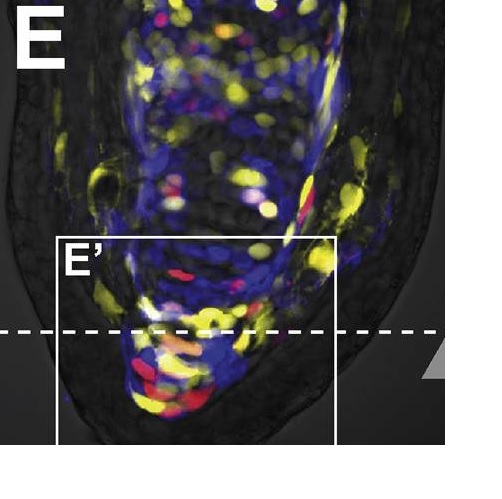Live Imaging of Axolotl Digit Regeneration Reveals Spatiotemporal Choreography of Diverse Connective Tissue Progenitor Pools.
Connective tissues-skeleton, dermis, pericytes, fascia-are a key cell source for regenerating the patterned skeleton during axolotl appendage regeneration. This complexity has made it difficult to identify the cells that regenerate skeletal tissue. Inability to identify these cells has impeded a mechanistic understanding of blastema formation. By tracing cells during digit tip regeneration using brainbow transgenic axolotls, we show that cells from each connective tissue compartment have distinct spatial and temporal profiles of proliferation, migration, and differentiation. Chondrocytes proliferate but do not migrate into the regenerate. In contrast, pericytes proliferate, then migrate into the blastema and give rise solely to pericytes. Periskeletal cells and fibroblasts contribute the bulk of digit blastema cells and acquire diverse fates according to successive waves of migration that choreograph their proximal-distal and tissue contributions. We further show that platelet-derived growth factor signaling is a potent inducer of fibroblast migration, which is required to form the blastema.
Back to list
